What’s a little dog to do when his smile shows more tartar than teeth?
Poor Ricco had a problem that a lot of dogs, particularly small breed dogs, end up with: he had periodontal disease.
“Periodontal” refers to the structures around the teeth:
- The gums (gingiva)
- The periodontal ligament – the strands of connective tissue that anchor the tooth to the bone
- The bony sockets the teeth sit in (alveolar bone)
Periodontal disease is associated with tartar build-up on the teeth, stinky breath, and teeth that become loose and painful.
Ricco’s tartar build-up was some of the worst I have ever seen: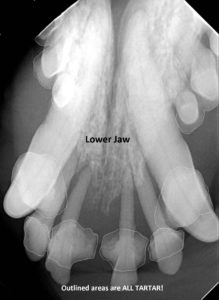
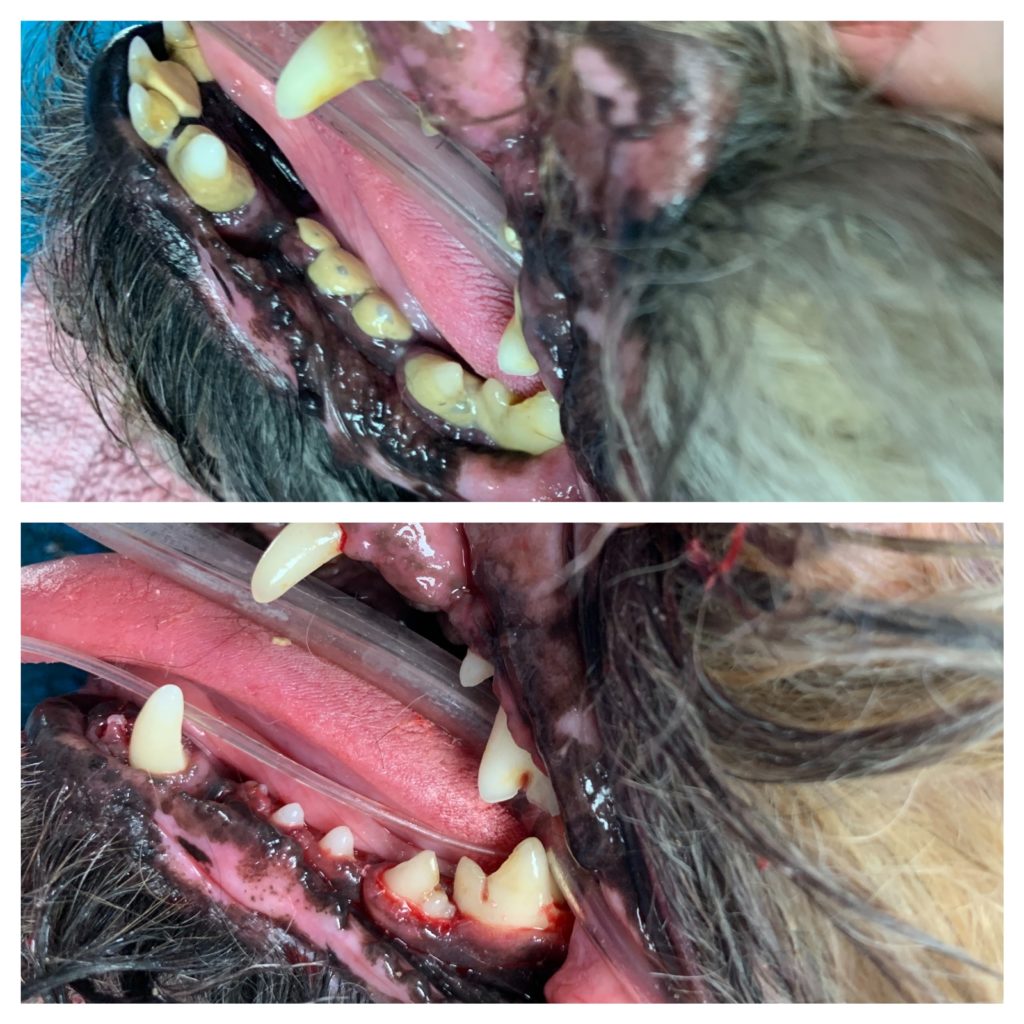
Ricco’s Dental Day
After Ricco had an IV catheter placed, he was put under general anaesthesia using an endotracheal tube. The tube not only delivers oxygen and anaesthetic gas, it ensures that none of the dirty stuff from his mouth can end up going down an airway.
We could see right away that one of his premolar on the upper left was loose: Ricco’s Loose Tooth
X-rays soon showed just why that tooth was so loos – there was almost no bone left to hold it in place!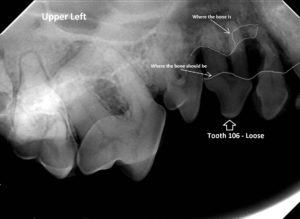
Several other teeth had also lost their bony attachments, including this lower right molar: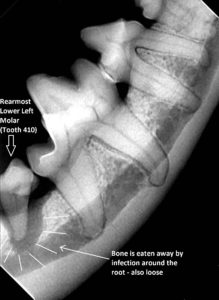
After his X-rays were done, and we knew which teeth needed to come out, Ricco got injections of local anaesthetic to numb up the areas of extractions. This diagram shows one of the nerves that gets blocked – the infraorbital nerve. The local anesthetic is injected right into the “tunnel” in the skull where the nerve comes out!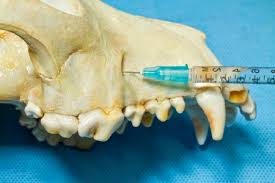
Ricco had eight teeth that were loose or diseased.
After they were removed, an ultrasonic scaler was used to shatter off all of the tartar. Ultrasonic Scaler removing Tartar
